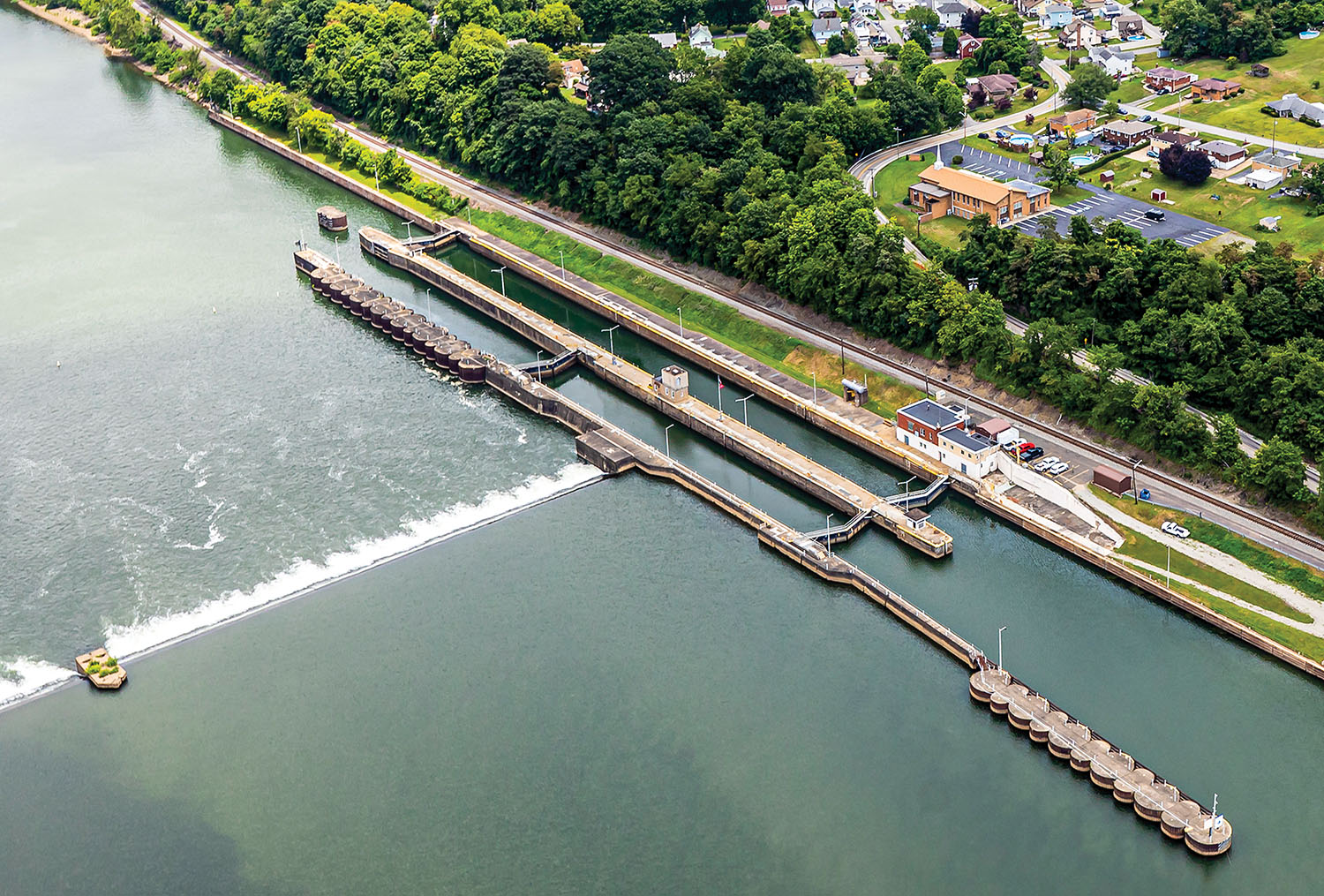Beginning the week of July 8, the Pittsburgh Engineer District plans to demolish the more than 100-year-old Monongahela Locks and Dam 3 at Elizabeth, Pa.
The facility, which has been in operation since 1907, is being removed to form a 30-mile stretch of navigable waterway between the locks and dams at Charleroi (Locks and Dam 4) and Braddock (Locks and Dam 2). The Lower Mon Project began with the installation of a new gated dam at Braddock, replacing the former fixed-crest dam. It also included the creation of an expanded riverside lock chamber at Charleroi.
Contractors will use explosives to control the demolition at Elizabeth. Navigation near the locks and dam will be restricted for at least three days, the district said. Work to remove the dam entirely will continue through the end of the year.
“Our primary concern is maintaining safe navigation throughout the demolition phase,” said Steve Fritz, the district’s megaproject program manager.
Until the entire dam is removed, and until the Corps verifies that the navigation channel is safe through that area, all traffic must continue through the locks, the Corps said. The Pittsburgh District will begin to remove the lock chamber walls next year. Their removal is expected to take until 2027.
The Pittsburgh Engineer District announced September 5 that the nearly $30 million contract to demolish the locks and dam at Elizabeth had been awarded to the Joseph B. Fay Company of Pittsburgh.
Removing the dam will raise the river’s water level by approximately 2 feet for communities between Elizabeth and Braddock. The river elevation will drop by about 3.2 feet between Elizabeth and the dam in Charleroi. The demolition will result in the pool level reaching 723.7 feet between Charleroi and Braddock.
The change in the river level means only one lock chamber at Charleroi will be useable for navigation. While its future refurbishment still remains authorized by the Corps, the plan signed by the assistant secretary of the Army in 2014 defers work on the landside chamber until the 2050s. A Corps economic analysis of the project that showed that the new riverside lock chamber at Charleroi, when combined with the elimination of the lock at Elizabeth, would capture “90 percent of the economic benefit” of the original scope of the Lower Mon Project, which included two locks at Charleroi. That amounts to $200 million in benefits for commercial navigation.
Monongahela Locks 2, 3 and 4 are the three oldest currently operating navigation facilities on the Monongahela River. These locks experience the highest volume of commercial traffic on the system.
The dam at Monongahela Locks and Dam 3 at Elizabeth, Pa., will be removed by explosive demolition beginning the week of July 8 to create a navigable pass in a 30-mile pool between Locks and Dam 2 at Braddock and Locks and Dam 4 at Charleroi. Construction on the Elizabeth Facility, Mile 23.8, began in 1905 and was completed in 1907. (Photo by Michel Sauret/Pittsburgh Engineer District)
Michel Sauret, public affairs specialist at the Pittsburgh Engineer District, contributed to this report.




